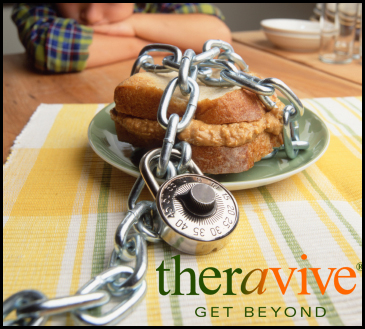
Sharing food is thought to be one of the ways that we create bonds and strengthen relationships. While that may be true for most people, the season for gathering around the dinner table is fraught with stress and anxiety for many who have food allergies and special diets.
It seems that we are more aware than ever of the ways that food can make and keep us healthy or contribute to illness and disease. Current research indicates that the food in developing countries is being genetically modified to be more appealing which results in a wide range of health consequences.
According to the Centers for Disease Control and Prevention, food allergies increased approximately 50% between 1997 and 2011. The organization Food Allergy, Research and Education (FARE) reports that over 15 million Americans and 17 million Europeans have food allergies, intolerances or sensitivities, which includes 1 in 13 children, or approximately two children in every classroom.
What is the Problem?
Some believe that food allergies are being over-diagnosed, in part because of confusion between an allergy response that is based on immune system functioning, and autoimmune responses. Autoimmune responses occur when the body fails to recognize the difference between external threats and parts of our own body or bodily processes. When this happens, the body makes auto-antibodies which attack our normal cells by mistake.
To help clarify the differences in food allergies, intolerances and sensitivities, consider the following information.
Food allergies are the result of the body’s immune response mistakenly identifying a food protein as an ‘enemy invader’ (like a virus or bacteria), triggering an immune response. The body releases chemicals like histamine that result in allergy symptoms. These symptoms usually result quickly (less than hour) after touching, smelling or ingesting a food allergen. The symptoms can range from mild, such as hives, itching and watery eyes, to deadly, including anaphylactic shock. People who have asthma and food allergies are at the greatest risk.
Food intolerance is caused by the body’s inability to digest a particular food because it lacks a specific enzyme. Celiac disease (gluten intolerance) and lactose intolerance are both considered autoimmune disorders that result in food intolerance. With food intolerance, one can avoid eating specific foods to manage this reaction. The reaction may be immediate, including GI distress for those who are lactose intolerant or have Celiac Disease, or may be delayed as long as 24-48 hours. Reactions to gluten may include congestion, joint pain, headaches, foggy thinking, problems with concentration, fatigue, depression, anxiety and more.
Food sensitivities are unpleasant reactions to foods that are not based on immune response. These may include gastric distress such as acid reflux, nausea or cramping.
The incidence of food allergies, intolerances and sensitivities related to gluten (a protein found in wheat, barley and rye – among other things) is staggering. Many other grains cause a ‘gluten-reaction’ for those with gluten intolerance or sensitivity, which rules out rice and other food substitutes that are often used to replace wheat in products. Other common food allergies that seem to be showing up everywhere are dairy, nuts, eggs, soy and seafood.
Type II Diabetes is also on the rise, meaning that many are pre-diabetic and need to avoid sugar and starch. People with osteoarthritis are learning that any grains may create inflammation and exacerbate symptoms. Those with hypertension or heart conditions need to avoid salt and foods that are high in sodium.
How to Survive Holiday Meals
- If going to a restaurant, call ahead to discuss or view the menu online before you arrive.
- Be proactive – if you can only eat gluten-free bread or rolls, take your own. If you use Stevia instead of sugar, take packets of Stevia to sweeten your drinks. You can do this at restaurants and dinner with family or friends.
- Let people know about your dietary needs when ordering in a restaurant – ask for recommendations. Many restaurants have a different menu but don’t advertise this, so you may not know unless you ask. Others indicate which menu items are gluten free, low in sodium, fat free, etc.
- If you are dining with family or friends, call ahead to explain your dietary needs and discuss alternatives, ie. bring your own bread/rolls or Stevia, make a dessert that is sugar-free to bring and share with others.
- If you have food allergies, always keep your epi-pen with you in case of exposure. Make sure someone close to you knows that you have food allergies and where you keep your supplies, or instruct them on what to do in case of emergency.
What is a Dinner Host to Do?
- Ask your guests ahead of time if they have any food allergies or special dietary needs – if so, discuss the menu and get input on possible substitutes.
- Keep toppings and dressings ‘on-the-side’ – this often allows people with special dietary needs to eat the main food and avoid allergens in toppings, gravies, dressings, cheeses (dairy, sugar, nuts, gluten, etc.)
- Make a ‘small batch’ that does not include specific allergens when possible – for example, we prepared a big casserole dish of traditional dressing and a smaller dish of the dressing without sage for my sister-in-law who has Crohn’s Disease. Many recipes can be tweaked to accommodate those with special dietary needs; this is especially important when someone is unable to eat sugary desserts. Another possibility is to simply have one yummy dessert that does not have sugar (made with Stevia or other alternative sweeteners).
- Educate yourself about alternatives to gluten, sugar and other problem food ingredients – there are tons of traditional recipes online that use substitutes for gluten, sugar, dairy and other items. Special cookbooks are available to purchase for those who will be following special diets regularly.
- Read labels – search for hidden ingredients that are disguised by other names, ie. sugar masquerading as high fructose corn syrup
- Buy organic foods when possible
- Avoid processed foods – stick with vegetables and grass-fed, lean meat to eliminate problems.
- Clearly identify any foods that contain allergens for your guests – most people with food allergies know what they can and cannot safely eat. However, if you mention to everyone that certain dishes contain gluten or sugar, etc. there will be no unwelcome surprises.
________________________________________________________________________________________________________________________________
"Food Allergy Research & Education." Food Allergy Research & Education. Web. 24 Oct. 2013.
"What Is the Difference Between a Food Allergy, Food Intolerance and Food Sensitivity?" Institute of Food Technologists. Web. 24 Oct. 2013.
About the Author
 LuAnn Pierce, LCSW
LuAnn Pierce, LCSWI am a clinical social worker, therapist and writer. Currently, I offer online therapy and coaching services to people in Colorado and Wyoming. As a provider for the CO Department of Vocational Rehabilitation and the National MS Society, my expertise in counseling people who have disabilities and chronic illness is considerable. I have written for About.com, DailyRx.com, Theravive.com, GoodTherapy.org, SelfHelpMagazine.com and contribute to several other online health and mental health sites.
Office Location:
19th & Dahlia
Denver, Colorado
80220
United States
Phone: 303-910-2425
Contact LuAnn Pierce, LCSW
Professional Website:
http://HireASocialWorker.com